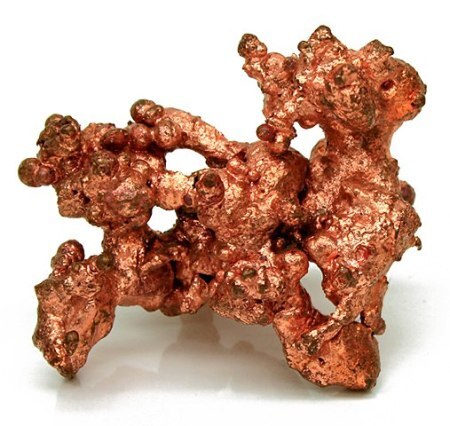John C. Baez's Blog, page 9
August 2, 2024
Quark Stars

Wow — evidence that very massive neutron stars may have cores made of deconfined quark matter! The idea of a ‘quark star’ is not new, but I didn’t know it was a serious possibility.
An ordinary neutron star has a core made mostly of densely packed neutrons. A matchbox-sized chunk of this stuff weighs about 3 billion tonnes. But if you squeeze this stuff hard enough, eventually the neutrons break. Each neutron consists of 3 quarks held together by gluons. So when the neutrons break yo...
August 1, 2024
Agent-Based Models (Part 14)
I’ve been explaining our software for agent-based models based on stochastic C-set rewriting systems. But my only example so far has been the Game of Life, which is not what most people would call stochastic: it’s a deterministic model!
In fact, a deterministic model is just a stochastic model where all the probabilities for events to happen are 0 or 1. So we can call the Game of Life stochastic if we want. But that’s not very satisfying! So let’s tweak the Game of Life to make it more rando...
July 27, 2024
Tritone Substitutions
A ‘tritone substitution’ is a popular trick for making your music sound more sophisticated. I’ll show you a couple of videos with lots of examples. But since I’m mathematician, let me start with the bare-bones basics.
The fifth note of the major scale is called the dominant. In the key of C it’s G.
A dominant seventh chord is a 4-note chord where you start at the dominant and go up the major scale skipping every other note. In the key of C it’s the notes in boldface here:
G A B C D E F
Belo...
July 24, 2024
Agent-Based Models (Part 13)
Our 6-week Edinburgh meeting for creating category-based software for agent-based models is done, yet my collaborators are still busy improving and expanding this software. I want to say more about how it works. I have a lot of catching up to do!
Today I mainly want to announce that Kris Brown has made a great page explaining our software through a working example:
His explanation uses an idea interesting in its own right: ‘literate programming’, where the code is not...
July 20, 2024
What is Entropy?
I wrote a little book about entropy; here’s the current draft:
If you see mistakes in it, please let me know!
An alternative title would be 91 Tweets on Entropy, but people convinced me that title wouldn’t age well: in decade or two few people may remember what ‘tweets’ were.
Here is the foreword, which explains the basic idea.
ForewordOnce there was a thing called Twitter, where people exchanged short messages called ‘tweets’. While it had its flaws, I came to like it an...
June 17, 2024
Van der Waals Forces
Even though helium is the least reactive of the noble gases, you can make a molecule of two helium atoms! Yes, He2 is a thing! It’s called ‘dihelium’ or the helium dimer.
But the two helium atoms aren’t held together by a bond. Instead, they’re held together by a much weaker force: the van der Waals force. So this isn’t an ordinary molecule. It’s huge! The distance between nuclei is 70 times bigger than it is for H2. And it’s very loosely held together, so you’ll only see it at extremely...
June 9, 2024
The Grotthuss Mechanism

If you could watch an individual water molecule, once in a while you’d see it do this.
As it bounces around, every so often it hits another water molecule hard enough enough for one to steal a hydrogen nucleus—that is, a proton—from the other!
The water molecule with the missing proton is called a hydroxide ion, OH⁻. The one with an extra proton is called a hydronium ion, H₃O⁺.
This process is called the ‘autoionization’ of water. Thanks to this, a few molecules in a glass of water are ac...
June 5, 2024
Agent-Based Models (Part 12)
Today I’d like to wrap up my discussion of how to implement the Game of Life in our agent-based model software called AlgebraicABMs.
Kris Brown’s software for the Game of Life is here:
• game_of_life: code and explanation of the code.
He now has carefully documented the code to help you walk through it, and to see it in a beautiful format I recommend clicking on ‘explanation of the code’.
A fair amount of the rather short program is devoted to building the grid on which the Game of Life runs, a...
June 1, 2024
Transition Metals (Part 2)
Why is copper red? Why is it so soft compared to, say, nickel—the element right next to it in the periodic table? Why is it such a good conductor of electricity?
All of this stems from a violation of Hund’s rules. Let me explain.
In Part 1, I explained the basic math of transition metals. Now I just want to talk about how the first row of transition metals fill up the 10 orbitals in the 3d subshell, and what’s special about copper:

These elements have all the electrons that argon does: ...
May 24, 2024
Agent-Based Models (Part 11)
Last time I began explaining how to run the Game of Life on our software for stochastic C-set rewriting systems. Remember that a stochastic stochastic C-set rewriting system consists of three parts:
• a category C that describes the type of data that’s stochastically evolving in time
• a collection of ‘rewrite rules’ that say how this data is allowed to change
• for each rewrite rule, a ‘timer’ that says the probability that we apply the rule as a function of time.
I explained all this with m...
John C. Baez's Blog
- John C. Baez's profile
- 29 followers






